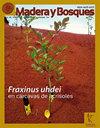热带重新造林中的矿物肥料:墨西哥塔巴斯科十种本土树种的幼苗生长和存活
IF 0.4
4区 农林科学
Q4 FORESTRY
引用次数: 0
摘要
在墨西哥塔巴斯科的低地热带地区,用10种本地树种在4种不同剂量的矿物肥料下进行了重新造林试验。采用随机设计,在6个1公顷的样地中种植了2415株花椒、巴西花椒、五角草、木棉、美洲花、环花肠、菊花、洋红椒、白豆和蔷薇幼苗。矿物肥分别为0 g、150 g、375 g、750 g氮磷钾(NPK)和微量元素(Ca、Cu、Fe、Mg、Mn、Zn、S)。对移栽苗第一年成活率和株高中位数增长量进行了统计置信区间分析。在所有施肥剂量的组合下,五角木的第一年总体存活率为66%,而白菖蒲仅为12%。另一方面,环形肠虫的中位高度增长量为102 cm,而洋红豆的中位高度增长量仅为7 cm。矿质施肥引起的盐度效应对6种种植树种的成活率有明显影响。唯一从矿物施肥中受益的物种是五角草。总之,一般不建议在热带再造林中施用矿物肥料。适当的物种选择对于有利的生存和高度增加更为重要。本文章由计算机程序翻译,如有差异,请以英文原文为准。
Mineral fertilization in tropical reforestation: seedling growth and survival of ten native tree species in Tabasco, Mexico
A reforestation trial was carried out with ten native tree species under four different doses of mineral fertilizer in the lowland tropics in Tabasco, Mexico. In six one-hectare plots, 2415 seedlings of Brosimum alicastrum, Calophyllum brasiliense, Ceiba pentandra, Colubrina arborescens, Diphysa americana, Enterolobium cyclocarpum, Handroanthus chrysanthus, Pimenta dioica, Pouteria sapota, and Tabebuia rosea were planted in a randomized design. The mineral fertilizer consisted of a single initial dose of 0 g, 150 g, 375 g or 750 g nitrogen-phosphorus-potassium (NPK), as well as micronutrients (Ca, Cu, Fe, Mg, Mn, Zn, S). First-year survival and median height increment of transplanted seedlings were analyzed with statistical confidence intervals. Whereas overall first-year survival for Ceiba pentandra for all fertilization doses combined was 66%, it was only 12% for Brosimum alicastrum. On the other hand, median height increment was 102 cm for Enterolobium cyclocarpum, whereas it was only 7 cm for Pimenta dioica. The survival of six of the planted species was apparently affected by the salinity effect caused by mineral fertilization. The only species that benefited from mineral fertilization in a statistically significant way was C. pentandra. In conclusion, mineral fertilization in tropical reforestation is not recommended in general. Appropriate species selection is far more important for favorable survivorship and height increment.
求助全文
通过发布文献求助,成功后即可免费获取论文全文。
去求助
来源期刊

Madera Y Bosques
FORESTRY-
CiteScore
0.90
自引率
0.00%
发文量
16
审稿时长
>12 weeks
期刊介绍:
Madera y Bosques (Wood and Forests) is a scientific periodical journal which has the objective of serving as media for scientific and technological research related to forest products, forest management and conservation as well as forest ecology topics and related subjects. It publishes original scientific papers, topical articles, scientific notes or bibliographic reviews. It is a quarterly publication that appears in Spring, Summer and Fall. Ocassionally, special Winter Issues are published. Manuscripts are accepted in Spanish, English and sporadically in other languages. It has no Page Processing Charges and it is published by the Environment and Sustainability Department of the Instituto de Ecología, A.C. (Xalapa, Ver., México).
 求助内容:
求助内容: 应助结果提醒方式:
应助结果提醒方式:


